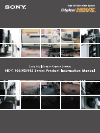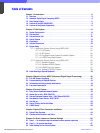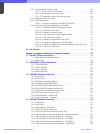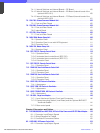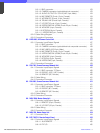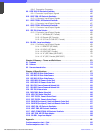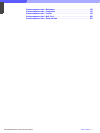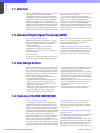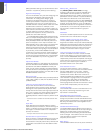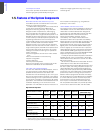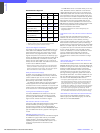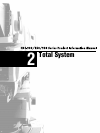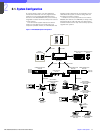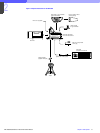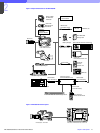
1
Chapter 1 Introduction 9HDC-900/950/930 Series Product Information Manual
1-1. Overview
The HDC-900/950/930 family is designed to provide a
wide range of choices of HDTV and SDTV
configurations to fulfill the increasing demands for
multiple global digital origination formats from almost
all applications including broadcasters, filmmakers,
production companies, etc. The HDC-900 Series
consists of HDC-900 full size studio model color video
camera and the HDC-950/930, its flawless companion
portable version. Both of them were developed for
both studio and outside application systems, based on
several newly developed technologies applied to each
key component such as pickup device, camera head,
camera control unit, and so forth.
One of the major design criteria was to easily
integrate the most popular Sony digital camera control
systems in order to enable the field-proven Sony
camera control system and its familiar menu control
systems to be used with the HDC-900/950/930,
resulting in quick and reliable installation and a wide
choice of camera systems implementations - from a
single stand-alone camera to a sophisticated Multi-
camera installation.
1-2. Advanced Digital Signal Processing (ADSP)
Easy-to-setup and highly reliable
Digital processing performs parameters in a digital
memory and keeps them intact for long periods of time,
resulting in a dramatic reduction of the need for
operator adjustment.
With the use of digital processing, further
advantages are achieved, such as to easy
implementation of this circuitry in ICs and LSIs while
increasing reliability.
Precise adjustment
The values of the camera set-up parameters can be
defined with great precision by digital processing.
Moreover, variations between cameras, which are very
difficult to avoid in analog models, can be reduced to
a minimum with digital processing by simply
equalizing parameter values.
Flexible signal processing and parameter settings
A significant advantage of digital processing is that it
can provide very flexible operation. Many camera
parameters can be controlled and each parameter
setting can be varied over a wide range of values.
1-3. Sony Design Criteria
There are several important design criteria Sony has
taken very seriously in the HDC-900 Series to ensure
that it not only provides the features required for these
new services, but also has compatibility with existing
broadcast environments, and further enhances DSP
(Digital Signal Processing) technology.
• True multi-standard operation from 1080/24P to
analog composite (NTSC/PAL).
• The HDC-900 Series must provide higher picture
quality than any conventional digital cameras.
Operationally, it must be compatible with current
Sony color video cameras.
• Digital system architecture should be consistent with
current 12-bit digital cameras and the previous
models as well so that all types can be mixed
together without picture matching difficulties.
• To take full advantage of 12-bit digitization, as many
camera processes as possible should be digital,
particularly gamma, detail and so on.
• Operational controls and connectors are located in
similar positions to those on current Sony HDC and
BVP Series cameras, so operators accustomed to
these models immediately find the HDC-900 Series
familiar and easy to use.
• Existing Sony MSUs, CNUs and RCPs can be used
with the HDC-900 Series. Current menu control
systems and auto set-up functions are also
compatible.
• Capital cost must not be significantly greater than
Sony standard definition camera equipment.
1-4. Features of the HDC-900/950/930
Exclusive HAD sensor technology
A new design of CCD has been developed for the
HDC-900, HDC-950, and HDC-930. Based on Sony
HAD sensor technology and using the on-chip lens
structure of the latest Power HAD
™
sensors, this CCD
is based on the 1920 × 1080 CIF (Common Image
Format) and is switchable between progressive mode
and interlace mode readout (except HDC-930 which is
only available at 1080/60i and 1080/50i without
progressive mode). With its light collecting capability
dramatically improved, this 2/3-inch type 2.2 million-
pixel FIT CCD used in the HDC-900/950 offers an
industry-leading sensitivity of f10 at 2,000 lux. It has a
limiting horizontal resolution of 1000 TVL/ph, a signal-
to-noise ratio of 54 dB (unweighted over 30 MHz) and
the outstandingly low vertical smear level of -135 dB*.
The cost effective 2/3- inch type 2.2 million-pixel IT
CCD used in the HDC-930 provides equivalent
performance as the FIT version CCD excluding the
vertical smear level which is provided at -125 dB*
* typical numbers.
12-bit A/D conversion and ADSP (Advanced Digital
Signal Processing)
The combination of 12-bit A/D conversion and the new
2.2- million sensor CCD provides excellent color
rendition and overall picture quality.
The powerful ADSP circuitry enables camera set-up
parameters to be adjusted over a wide range. Menus
are used to select the required parameters, such as
gain, gamma, flare, pedestal and detail, and with
adjustments made from a central Master Set-up Unit



